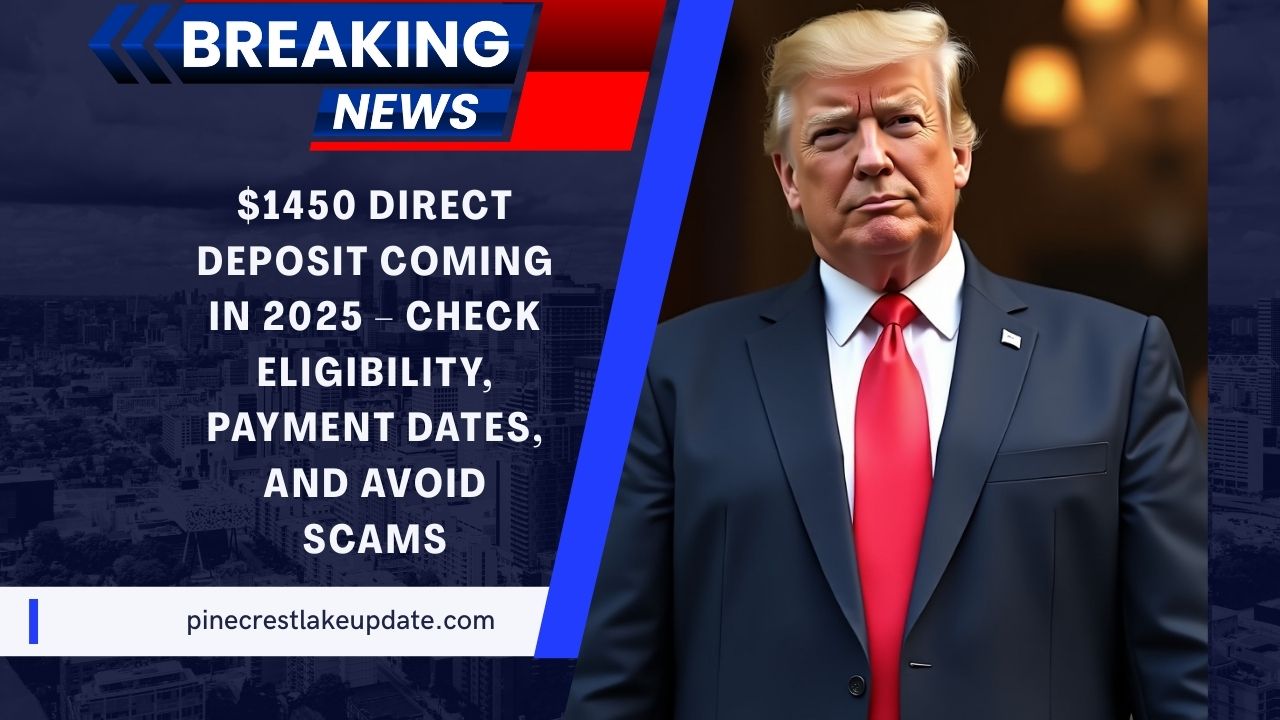With rising inflation and economic uncertainty, financial relief continues to be a key concern for millions of Americans.
In response, a proposed $1450 direct deposit payment is being considered in 2025 to support low and middle-income households, senior citizens, and benefit recipients.
While not officially confirmed yet, here’s a detailed breakdown of potential eligibility, payment process, and precautions.
What Is the $1450 Direct Deposit Payment?
The $1450 direct deposit is expected to be a federally funded relief measure aimed at easing household financial burdens in 2025.
It may be disbursed in two installments of $775 each and directly deposited into eligible recipients’ bank accounts.
Purpose of Stimulus-Type Checks
These payments are modeled after stimulus checks used during past economic downturns:
- To support essential expenses like food, utilities, and medicine
- To boost consumer spending, stimulating the economy
- To assist in economic recovery by increasing retail and service sector activity
Potential Timeline and Amounts
| Installment | Estimated Date | Amount |
|---|---|---|
| First Installment | Mid-May 2025 | $775 |
| Second Installment | Mid-June 2025 | $775 |
| Total Payment | — | $1450 |
Who Might Be Eligible?
Although not yet officially rolled out, the eligibility criteria will likely follow past patterns from federal and state-level relief payments.
1. Income Limits
| Filing Status | Adjusted Gross Income (AGI) Threshold |
|---|---|
| Single Filers | $75,000 or less |
| Married Filing Jointly | $150,000 or less |
| Head of Household | $112,500 or less |
Example:
- Emma, a single mother with a $70,000 AGI, qualifies.
- John and Lisa, a married couple with a $145,000 combined AGI, also qualify.
2. Age and Benefits Status
- Seniors 65+ will likely receive priority.
- SSDI, SSI, VA benefits, SNAP, and Medicaid recipients may qualify automatically.
3. Tax Filing Compliance
- Must have filed 2023 or 2024 tax returns.
- Non-filers can use the IRS non-filer tool.
4. Residency and Status
- Must be a U.S. citizen, green card holder, or approved refugee
- Should reside in the U.S. for 6+ months in 2024
5. No Outstanding Government Debt
- Those with unpaid child support or federal debts may face delays or garnishments.
Payment Method: Direct Deposit vs. Paper Check
| Method | Requirements | Pros/Cons |
|---|---|---|
| Direct Deposit | Bank details on file with IRS | Fast, secure, direct |
| Paper Check | No updated bank info on file | Slower (2–4 weeks), mailed via USPS |
Example:
If Arun files his 2024 return in March and updates his bank details, he could receive his full $1450 by late May.
How to Track Your Payment
- IRS “Get My Payment” Tool:
Visit irs.gov, enter your SSN, DOB, and address - My Social Security Portal:
For SSDI/SS recipients to update bank info - IRS Helpline:
Call 1-800-919-9835 if payment is delayed beyond 60 days
Warning: Avoid Scams
Scammers often exploit such benefit announcements. Here’s how to protect yourself:
- The IRS does not call or text asking for personal info
- Never click suspicious links or share bank/Social Security details
- Only trust official websites: irs.gov and ssa.gov
Example:
Sunita got a fake call promising $1450 if she shared bank details. She wisely checked the IRS website instead.
The $1450 direct deposit proposal in 2025 could provide meaningful support to those facing financial strain.
While it’s yet to be formally enacted, staying informed on eligibility, keeping your tax records and banking information up to date, and watching for IRS updates will ensure you’re ready to claim it when the time comes.
FAQs
Will everyone get the $1450 payment?
No, only those who meet income, age, and residency criteria will be eligible.
Do I need to apply separately for the payment?
Most likely no. If you filed a tax return or receive public benefits, you’ll be auto-enrolled.
When should I update my bank details?
Before April 2025 is recommended to ensure timely direct deposit delivery.
